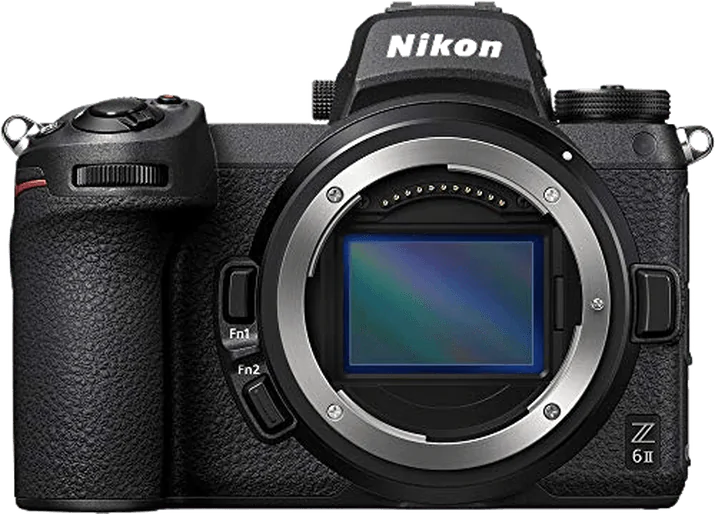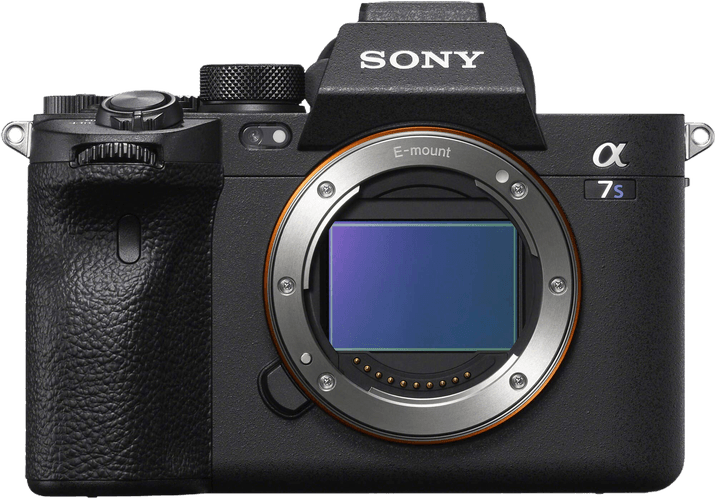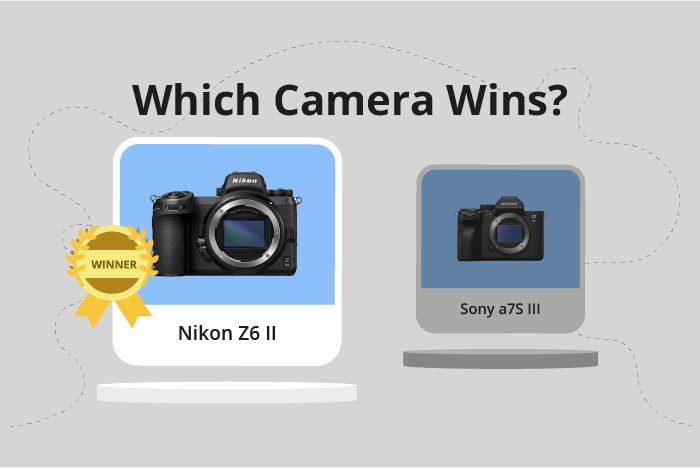Nikon Z6 II vs Sony a7S III Comparison
Nikon Z6 II

Sony a7S III

The Nikon Z6 II outperforms the Sony a7S III with a score of 83/100 compared to 74/100. Both cameras are mirrorless, released in 2020, and share similar dimensions. The Nikon Z6 II is slightly larger at 134 x 101 x 70mm, while the Sony a7S III is 129 x 97 x 81mm. Their weights are nearly identical, with the Nikon weighing 705g and the Sony at 699g.
The Nikon Z6 II’s higher score indicates its superiority in certain aspects, while also having a more affordable launch price of $1995 compared to the Sony’s $3499. Despite this, the Sony a7S III may excel in specific features or cater better to certain users’ preferences. Ultimately, both cameras are high-quality options, but the Nikon Z6 II stands out as the winner in this comparison.
Nikon Z6 II vs Sony a7S III Overview and Optics
The Nikon Z6 II outperforms the Sony a7S III in optics with a score of 83/100 compared to the Sony’s 69/100. Both cameras have a full frame CMOS sensor, image stabilization, and lens mounts specific to their respective brands (Nikon Z and Sony FE).
The Nikon Z6 II excels with its 24.5-megapixel resolution, resulting in sharper and more detailed images than the Sony a7S III’s 12.1 megapixels. Additionally, the Nikon has a faster shooting speed of 14 frames per second, which enables capturing fast-moving subjects and action shots more effectively than the Sony’s 10 frames per second. The Nikon Z6 II’s Dual Expeed 6 processor contributes to its superior performance, while its sensor has a higher DXOMARK score of 94 compared to the Sony’s 86.
The Sony a7S III, despite its lower score, has some advantages. Its Bionz XR processor provides efficient processing and contributes to its excellent low-light performance. The camera also excels in video recording capabilities, making it a popular choice among videographers.
Considering the optics, the Nikon Z6 II is the better choice for photographers who prioritize image quality and shooting speed. Its higher megapixel count and faster processor allow for capturing detailed images in various situations. On the other hand, the Sony a7S III might be suitable for those who focus on low-light photography and video recording, as its processor is tailored for such performance.
In comparing these two cameras, the Nikon Z6 II takes the lead in optics, making it an ideal choice for photographers who value image quality and speed. The Sony a7S III, while not as strong in this aspect, still holds its ground in low-light performance and video capabilities.
Nikon Z6 II vs Sony a7S III Video Performance
The Nikon Z6 II outperforms the Sony a7S III in video capabilities, scoring 91/100 compared to the Sony’s 77/100. Despite this difference, both cameras share some common video specifications. They both have a maximum video resolution of 4K and dimensions of 3840 x 2160. Additionally, both cameras can record at a maximum frame rate of 120fps.
The Nikon Z6 II’s superior video score can be attributed to its built-in time-lapse functionality. This feature allows users to create stunning time-lapse videos without the need for additional equipment or software. This advantage sets the Nikon Z6 II apart from the Sony a7S III and makes it a more versatile choice for videographers who value this creative tool.
On the other hand, the Sony a7S III does not have built-in time-lapse functionality, which is a drawback for those who enjoy creating time-lapse videos. However, this does not mean that the Sony a7S III is a poor choice for video recording. Its 4K resolution, 3840 x 2160 dimensions, and 120fps frame rate still make it a strong contender in the market.
When comparing the video capabilities of these two cameras, the Nikon Z6 II emerges as the better option due to its built-in time-lapse feature, which adds versatility to its video recording capabilities. The Sony a7S III, while lacking this feature, still offers high-quality video recording, making it a suitable choice for those who do not prioritize time-lapse functionality. Ultimately, the decision between these two cameras will depend on the individual needs and preferences of the videographer.
Nikon Z6 II vs Sony a7S III Features and Benefits
The Nikon Z6 II outperforms the Sony a7S III in terms of features, scoring 87/100 compared to the Sony’s 83/100. Both cameras share several specifications, such as having a touchscreen, GPS, WIFI, and Bluetooth capabilities. However, the Nikon Z6 II has a larger screen size (3.2 inches) and a higher screen resolution (2,100,000 dots) than the Sony a7S III (3 inches and 1,440,000 dots). This difference in screen size and resolution provides a clearer and more detailed view of the images captured.
The Nikon Z6 II’s advantage lies in its superior screen specifications. The larger screen size and higher resolution contribute to a more enjoyable and accurate image reviewing experience. This is especially beneficial for photographers who need to check their images for sharpness and detail.
On the other hand, the Sony a7S III does have a flip screen, which the Nikon Z6 II lacks. This flip screen can be advantageous for vloggers and photographers who need to shoot from different angles or take self-portraits. Although the flip screen is a valuable feature, it is not enough to outweigh the benefits of the Nikon Z6 II’s larger screen size and higher resolution.
Taking these factors into consideration, the Nikon Z6 II emerges as the better option for those who prioritize screen size and resolution, while the Sony a7S III may appeal to users who value the flexibility of a flip screen. Ultimately, the choice between these two cameras will depend on the specific needs and preferences of the photographer.
Nikon Z6 II vs Sony a7S III Storage and Battery
The Sony a7S III outperforms the Nikon Z6 II in storage and battery, scoring 76/100 compared to the Nikon’s 71/100. Both cameras have two memory card slots and support USB charging. The Nikon Z6 II accepts SD, CFexpress Type B / XQD (UHS-II compatible) memory cards, while the Sony a7S III accepts SD / SDHC / SDXC (UHS-II compatible) and CFexpress Type A cards.
The Sony a7S III has a longer battery life of 600 shots, compared to the Nikon Z6 II’s 410 shots. This advantage makes the Sony camera more suitable for extended shooting sessions. The Nikon Z6 II uses the EN-EL15c battery type, while the Sony a7S III uses the NP-FZ100 battery type.
Despite the lower score, the Nikon Z6 II offers compatibility with CFexpress Type B / XQD cards, which may be beneficial for some users. However, the Sony a7S III still stands out as the better option in terms of storage and battery performance.
Nikon Z6 II vs Sony a7S III – Our Verdict
Are you still undecided about which camera is right for you? Have a look at these popular comparisons that feature the Nikon Z6 II or the Sony a7S III:

